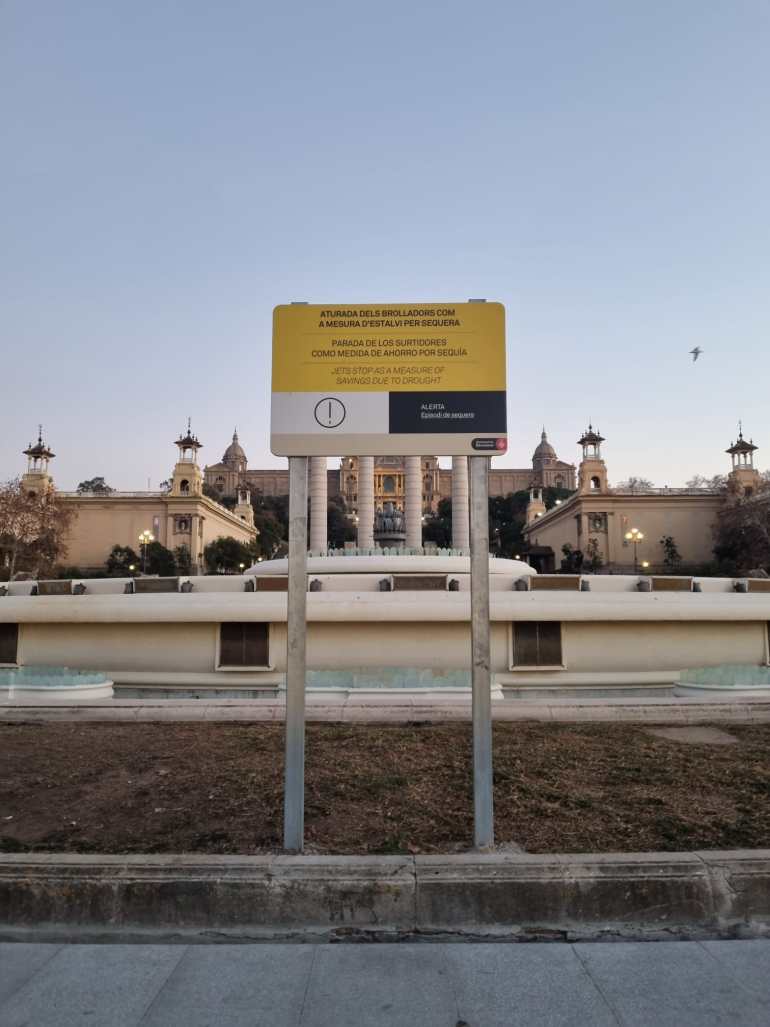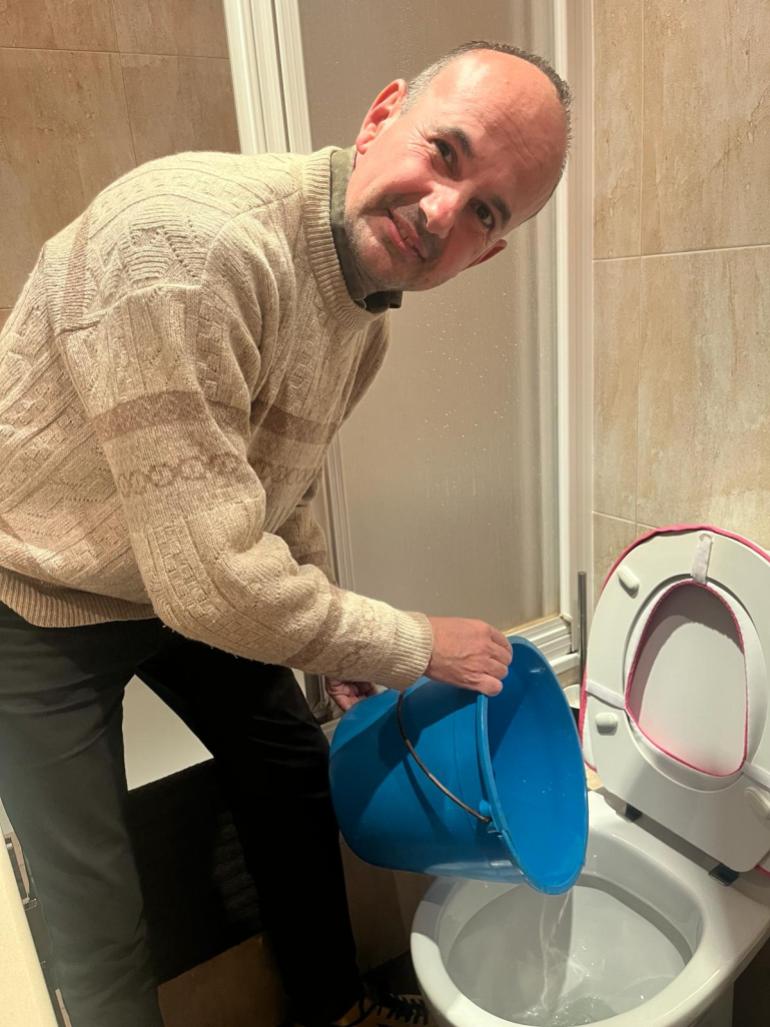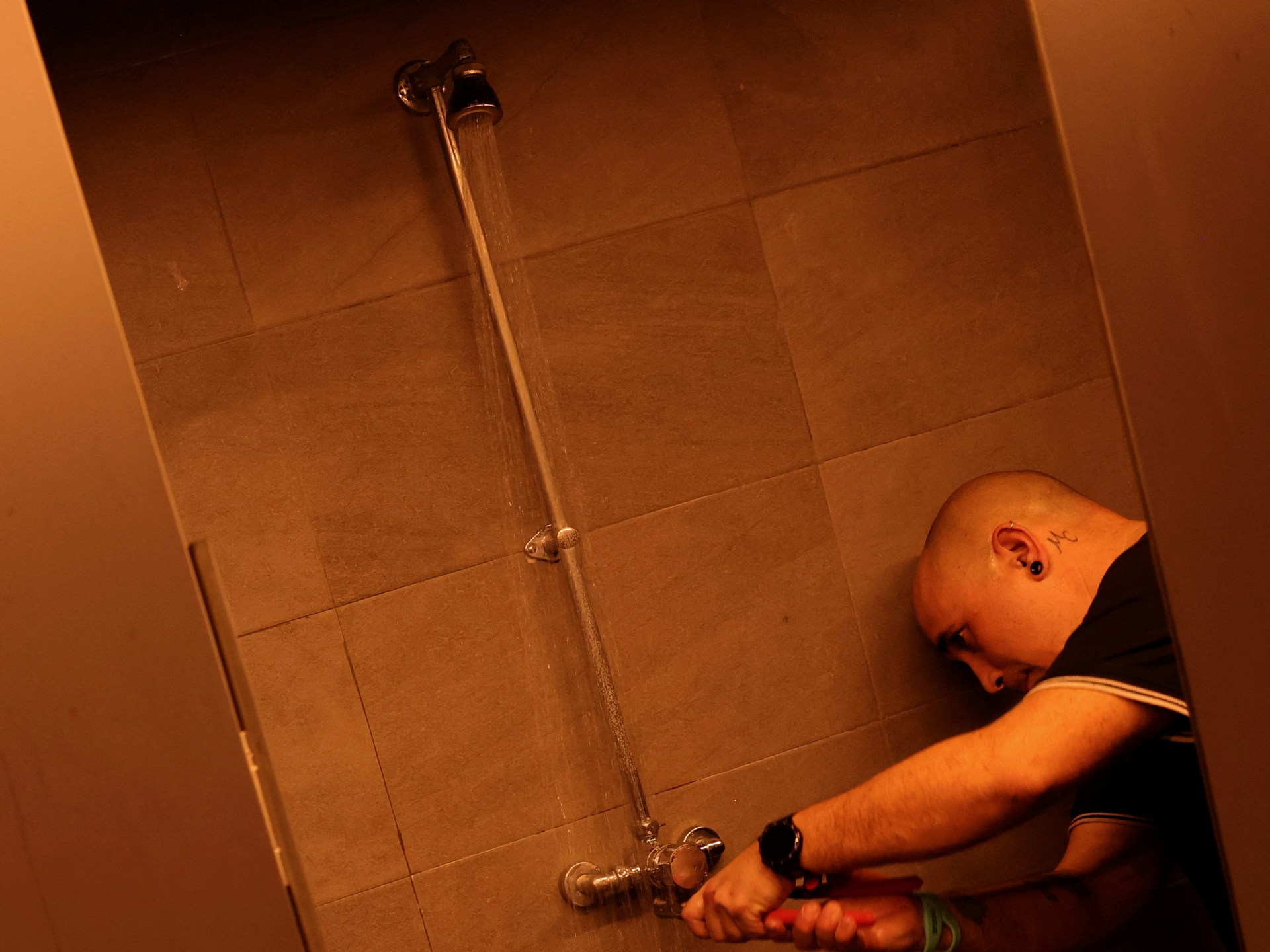Barcelona, Spain – The Magic Fountain is a popular tourist attraction where coloured jets of water shot up in the air as classical or pop favourites played.
Not anymore.
Like fountains across Barcelona, it lies dry and a little forlorn with signs reading: “Fountain turned off due to drought”.
The free musical show at the water feature, which had run for nearly 100 years, is another casualty of what Catalan authorities in northern Spain have described as the “worst drought ever”.
After three years without sustained rainfall, emergency measures were brought at the weekend, which include a ban on refilling swimming pools in hotels or campsites or topping them up unless recycled water is used.

If the heavens do not open in the next few months, Spain may order two ships per day to carry water from Valencia to the Catalan capital, Barcelona port authorities said.
Tourists visiting Catalonia – Spain’s most popular tourist region, which attracted 18 million visitors last year – face the prospect of swimming pool closures as experts predicted pools will inevitably run dry because of spillage and evaporation.
The only exception will be swimming pools used for medical reasons.
Fears for summer
With the lucrative summer tourist season ahead, campsites are exploring ways to use seawater in pools. One option could be bringing seawater to top up pools, but this is expensive.
Washing cars and watering public gardens were banned as part of the first stage of this emergency plan – unless the water comes from an approved recycling system.
Swimming clubs with outdoor pools are exempt – for now – but are banned from using showers. Television reports showed showers being taped up so they could not be used. Beach showers were turned off.
On the beach in Gava, a town south of Barcelona, Lavinia Mestre was taking advantage of unusually hot weather for February to enjoy a quick swim.
“I know some people who have stopped coming to the beach because of the lack of showers. But I bring a bottle and use the seawater to get the sand off my legs,” Mestre, a 20-year-old student, told Al Jazeera.
“I understand why they have turned off the showers and it is not much of a sacrifice in the middle of a drought.”
‘Worst drought ever recorded’
In Barcelona, many have been stirred into action after months without rain.
As Ana Miquel waited for the water to warm in her kitchen, she collected five litres in a bottle.
“We have no choice but to save the water. It is silly to waste the water when we have a chronic drought,” Miquel, 65, a retired hotel executive who lives in Barcelona, told Al Jazeera.
The restrictions affect about six million people in Barcelona and 200 towns, or about 80 percent of the region’s population.

Miquel Marti, a university lecturer in urban planning in Barcelona, believes people must change their behaviour while living in a drought.
“We put a bucket in the shower to collect water then use it in the toilet. We take less water to wash up and make sure that the washing machine is not on a long cycle. We have to change the way we live,” Marti, 50, told Al Jazeera.
Authorities are under no illusion about the seriousness of the drought, which has seen reservoirs in the region fall to 15.8 percent of normal levels, according to Spanish government figures.
“It’s the worst drought ever recorded,” Pere Aragones, Catalonia’s regional president, told a press conference last week.
The emergency measures are designed to reduce the daily amount permitted for residential uses from 210 to 200 litres (55 to 53 gallons) per person.
An average 10-minute shower consumes 150-200 litres (40-53 gallons), according to the World Health Organization.
Most households in Barcelona already fall well below that limit. However, hotels are using far higher amounts of water, according to a 2016 survey from Barcelona Regional, a development authority, which showed that Jacuzzis and pools in five-star establishments exceeded 540 litres (143 gallons) per guest per day.
The Barcelona Hotel Guild, an industry body, hit back by publishing a report from 2022 which claimed that after years of campaigns about sustainable water use, the average daily use per person in five-star hotels had fallen to 242 litres (64 gallons).
Yurbban Hotels, which has three hotels in Barcelona, has asked guests to take up the “four-minute shower challenge.”
“We have decided to go a bit further and involve our guests so that they shower in four minutes,” said Javier Diaz, director of hotels and sustainability.
If there are no rains before spring, the personal daily limit will be lowered to 180 litres (47 gallons), then 160 litres (42 gallons).
Under the new restrictions, agricultural irrigation must be cut by 80 percent – and water use in livestock farming by half and in the industry and leisure sector by 25 percent.
If triggered, a second phase of restrictions would see showers at gyms switched off.
‘Climate without rain for years’
Catalonia’s water crisis comes after Spain and other parts of Europe suffered a series of heatwaves last year that depleted reserves through evaporation while consumption increased.
In Andalusia in southern Spain, a deep drought has also left authorities considering bringing in similar emergency measures.
Antonio Aretxabala, a hydrology expert at the University of Zaragoza, said Spain’s water crisis was caused by a lack of rain and over-use of water for agriculture, which only accounts for 2.3 percent of the country’s gross domestic product.

“We have a climate without rain for years and exorbitant use of water for agriculture. About 85 percent of water use is for agriculture. The rest is for human and industrial use,” he said in an interview with Al Jazeera.
“Spain is one of the driest parts of Europe, but it has one of the biggest hydraulic footprints in terms of the kind of products we export like tomatoes or other fruit.”
Aretxabala said humans had adjusted their behaviour to climate change, but agriculture had not changed fast enough.
The drought is not only affecting humans but also damaging trees, which are essential to absorbing carbon dioxide that prevents further climate change.
“The lack of rain means trees are weaker and more prone to illness and drying out. This means that they can absorb less carbon dioxide and there is a greater risk of forest fires,” said Marta Gonzalez Santis of the Catalan Technological Forest Centre, which published a report on Monday on the damage that climate change is doing to vegetation cover.
Sumber: www.aljazeera.com
 Skip to content
Skip to content

